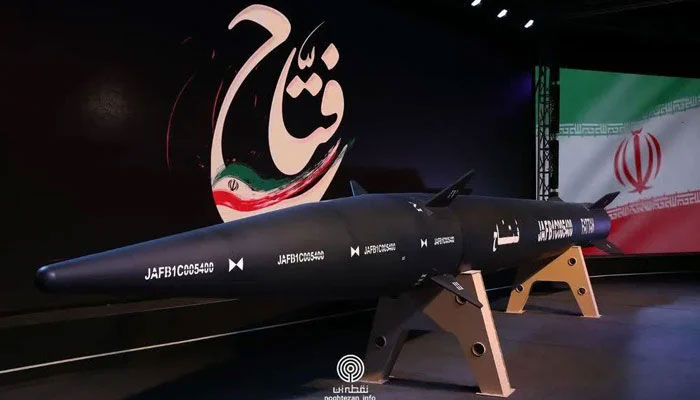Iran’s nuclear mystery
In early 2022, the US government estimated that Iran would need as little as one week to produce enough weapons-grade HEU for one nuclear weapon
ISLAMABAD: Does Iran possess a nuclear weapon? This might be a billion dollar question for many today.
According to an article in The Washington Post published on April 10, Iran has enough fissile material that, if further enriched, would be sufficient for several nuclear weapons.
“While Iran says it has no plans to make nuclear weapons. It now has a supply of highly enriched uranium that could be converted into weapons grade fuel for at least three bombs in a time frame ranging from a few days to a few weeks”, stated the article.
The latest Congressional Research Service (CRS) report on Iran’s nuclear Weapon Production states that numerous IAEA reports state Iran has been producing batches of enriched uranium containing up to 2 percent u-235, up to 5 percent u-235, up to 20 percent u-235, and up to 60 percent u-235, respectively.
It is pertinent to mention here that the Joint Comprehensive Plan Of Action (JCPOA) mandates restrictions on Iran’s declared enrichment capacity and required that Iran’s enriched uranium stockpile must not exceed 300 kilograms of UF6 containing 3.67 percent u-235 “or the equivalent in other chemical forms.”
The aforementioned JCPOA restrictions constrained Iran’s nuclear programme so that Tehran, using its declared enrichment facilities, would, for at least 10 years, have needed a minimum of one year to produce enough weapons-grade HEU for one nuclear weapon. The agreement does not explicitly mandate such a timeline.
However, six years after the Trump administration’s controversial decision to withdraw from the pact, the restraints have fallen away, one by one, leaving Iran closer to nuclear weapons capability than at any time in the country’s history.
In March 2023, Mark Milley - US Chairman of the Joint Chief of staff - testified that Iran would need “several months to produce an actual nuclear weapon”.
According to reports, in early 2022, the US government estimated that Iran would need as little as one week to produce enough weapons-grade HEU for one nuclear weapon.
In April 2022, US State Department official sent an email to CRS stating that Iran would need approximately one year to complete the necessary weaponization steps, CRS report disclosed.
Interestingly, in the same year, Iran placed an order for 24 Su-35 combat aircraft from Russia, its first significant procurement of combat aircraft since the early 1990s and the first procurement of major arms after the expiration in 2020 of the UN embargo on such supplies to Iran.
Nevertheless, CRS latest report also noted that IAEA reports suggest that Iran does not yet have a viable nuclear weapon design or a suitable explosive detonation system.
According to them, Tehran may also need additional experience in producing uranium metal; weapons-grade HEU metal for use in a nuclear weapon is first “cast and machined into suitable components for a nuclear core.”
-
 Andrew Lands In Fresh Major Trouble After Princess Eugenie Left Him 'devastated'
Andrew Lands In Fresh Major Trouble After Princess Eugenie Left Him 'devastated' -
 Colleen Hoover Shares Major Update About Cancer Treatement
Colleen Hoover Shares Major Update About Cancer Treatement -
 UK Starmer Rules Out US Trade War, Calls For ‘calm Diplomacy’ Over Greenland
UK Starmer Rules Out US Trade War, Calls For ‘calm Diplomacy’ Over Greenland -
 Billy Bob Thornton Clears The Air About His Exit From 'Landman'
Billy Bob Thornton Clears The Air About His Exit From 'Landman' -
 DC Boss Gets Honest About Two New 'Batman' Films
DC Boss Gets Honest About Two New 'Batman' Films -
 Prince Harry Feels Sidelined By Meghan Markle As He Searches For Clearer Direction
Prince Harry Feels Sidelined By Meghan Markle As He Searches For Clearer Direction -
 Meghan Markle Warned About 'risky Move' As Prince Harry Arrives In Britain
Meghan Markle Warned About 'risky Move' As Prince Harry Arrives In Britain -
 Why Ashton Kutcher Is Still Talking About Whether He Showers
Why Ashton Kutcher Is Still Talking About Whether He Showers -
 IMF’s World Economic Outlook: ‘Resilient’ 2026 Growth Expected Amid Tariffs & AI Boom
IMF’s World Economic Outlook: ‘Resilient’ 2026 Growth Expected Amid Tariffs & AI Boom -
 Find Out Early Subtle Signs That You Might Have Parkinson's Disease
Find Out Early Subtle Signs That You Might Have Parkinson's Disease -
 Prince Harry Appears In High Spirit, Greets Supporters At London High Court
Prince Harry Appears In High Spirit, Greets Supporters At London High Court -
 Kate Middleton, Prince William Left 'frustrated' For THIS Major Reason
Kate Middleton, Prince William Left 'frustrated' For THIS Major Reason -
 Robert Irwin Reveals Relationship Status After 'DWTS' Romance Rumors
Robert Irwin Reveals Relationship Status After 'DWTS' Romance Rumors -
 Relieve Eczema Symptoms This Winter With Simple Steps
Relieve Eczema Symptoms This Winter With Simple Steps -
 Prince Harry Faces Marital Tensions As King Charles Offers Olive Branch
Prince Harry Faces Marital Tensions As King Charles Offers Olive Branch -
 South Korea, Italy Strengthen Ties To Bolster AI Technology, Business, Defence Cooperation
South Korea, Italy Strengthen Ties To Bolster AI Technology, Business, Defence Cooperation




